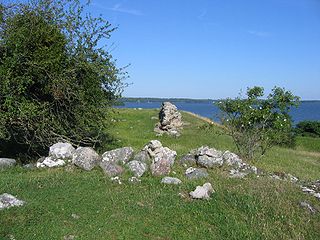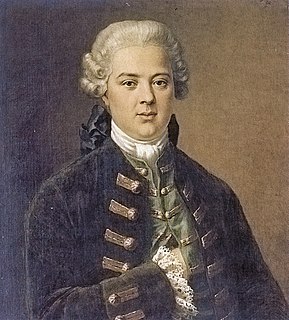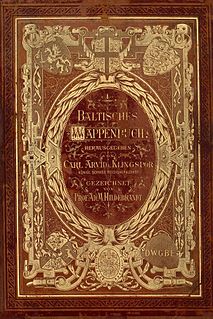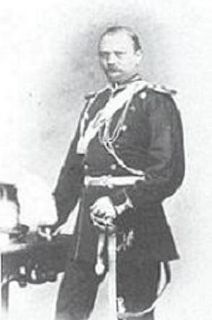
The Swedish nobility has historically been a legally and/or socially privileged class in Sweden, and part of the so-called frälse. The archaic term for nobility, frälse, also included the clergy, a classification defined by tax exemptions and representation in the diet. Today the nobility does not maintain its former privileges although family names, titles and coats of arms are still protected. The Swedish nobility consists of both "introduced" and "unintroduced" nobility, where the latter has not been formally "introduced" at the House of Nobility (Riddarhuset). The House of Nobility still maintains a fee for male members over the age of 18 for upkeep on pertinent buildings in Stockholm.

The estates of the realm, or three estates, were the broad orders of social hierarchy used in Christendom from the Middle Ages to early modern Europe. Different systems for dividing society members into estates developed and evolved over time.

Patricianship, the quality of belonging to a patriciate, began in the ancient world, where cities such as Ancient Rome had a class of patrician families whose members were initially the only people allowed to exercise many political functions. In the rise of European towns in the 12th and 13th century, the patriciate, a limited group of families with a special constitutional position, in Henri Pirenne's view, was the motive force. In 19th century central Europe, the term had become synonymous with the upper Bourgeoisie and cannot be interchanged with the medieval patriciate in Central Europe. In the German-speaking parts of Europe as well as in the maritime republics of Italy, the patricians were as a matter of fact the ruling body of the medieval town and particularly in Italy part of the nobility.
The term von[fɔn] is used in German language surnames either as a nobiliary particle indicating a noble patrilineality, or as a simple preposition used by commoners that means of or from.

The Austrian nobility is a status group that was officially abolished in 1919 after the fall of Austria-Hungary. The nobles are still part of Austrian society today, but they no longer retain any specific privileges. Austria's system of nobility was very similar to Germany's, as both countries were previously part of the Holy Roman Empire (962–1806).
The Leibzoll was a special toll which Jews had to pay in most of the European states in the Middle Ages and up to the beginning of the nineteenth century.

Croatian nobility was a privileged social class in Croatia during the Antiquity and Medieval periods of the country's history. Noble families in the Kingdom of Croatia included high ranking populates from Slavonia, Dalmatia, Istria, and Republic of Ragusa. Members belonged to an elite social hierarchy, normally placed immediately behind blood royalty, that possessed considerably more privileges or eminence than most other classes in a society. Membership thereof typically was often hereditary. Historically, membership in the nobility and the prerogatives thereof have been regulated or acknowledged by the monarch. Acquisition of sufficient power, wealth, military prowess or royal favour enabled commoners to ascend into the nobility. The country's royalty was heavily influenced by France's nobility resulting members of the Royal Courts to assume French titles and practices during French occupation. The controversial assumption of French practices contributed to wide spread political and social elitism among the nobles and monarch. The nobility regarded the peasant class as an unseen and irrelevant substrata of people which lead to high causality revolts and beheadings as well as sporadic periods of intense domestic violence.
The German nobility and royalty were status groups of the medieval society in Central Europe, which enjoyed certain privileges relative to other people under the laws and customs in the German-speaking area, until the beginning of the 20th century.

Dobrilugk Abbey was a Cistercian monastery in Lower Lusatia in the territory of the present town of Doberlug-Kirchhain, Brandenburg, Germany.

The Baltic or Baltic German nobility was the privileged social class in the territories of today's Estonia and Latvia. It existed continuously since the Northern Crusades and the medieval foundation of Terra Mariana. Most of the nobility were Baltic Germans, but with the changing political landscape over the centuries, Polish, Swedish and Russian families also became part of the nobility, just as Baltic German families re-settled in e.g. the Swedish and Russian Empires. The nobility of Lithuania is for historical, social and ethnic reasons often separated from the German-dominated nobility of Estonia and Latvia.

Freyung is a town in Bavaria, Germany, capital of the Freyung-Grafenau district. It is situated in the Bavarian Forest mountain range, near the border with Austria and the Czech Republic.

The Theater auf der Wieden, also called the Freihaus-Theater auf der Wieden or the Wiednertheater, was a theater located in the then-suburban Wieden district of Vienna in the late 18th century. It existed for only 14 years (1787–1801), but during this time it was the venue for the premiere of no fewer than 350 theatrical works, of which the most celebrated was Mozart's opera The Magic Flute. During most of this period the director of the theater was Emanuel Schikaneder, remembered today as librettist and impresario of The Magic Flute.

Grand Burgher [male] or Grand Burgheress [female] is a specific conferred or inherited title of medieval German origin and legally defined preeminent status granting exclusive constitutional privileges and legal rights, who were magnates and subordinate only to the Emperor, independent of feudalism and territorial nobility or lords paramount. A member class within the patrician ruling elite, the Grand Burgher was a type of urban citizen and social order of highest rank, a formally defined upper social class of affluent individuals and elite burgher families in medieval German-speaking city-states and towns under the Holy Roman Empire, who usually were of a wealthy business or significant mercantile background and estate. This hereditary title and influential constitutional status, privy to very few individuals and families across Central Europe, formally existed well into the late 19th century and early part of the 20th century. In autonomous German-speaking cities and towns of Central Europe that held a municipal charter, town privileges or were a free imperial city such as Hamburg, Augsburg, Cologne and Bern that held imperial immediacy, where nobility had no power of authority or supremacy, the Grand Burghers (Großbürger) or patricians ("Patrizier") constituted the ruling class.

The Hanseaten is a collective term for the hierarchy group consisting of elite individuals and families of prestigious rank who constituted the ruling class of the free imperial city of Hamburg, conjointly with the equal First Families of the free imperial cities Bremen and Lübeck. The members of these First Families were the persons in possession of hereditary grand burghership of these cities, including the mayors, the senators, joint diplomats and the senior pastors. Hanseaten refers specifically to the ruling families of Hamburg, Lübeck and Bremen, but more broadly, this group is also referred to as patricians along with similar social groups elsewhere in continental Europe.
Anti-miscegenation laws or miscegenation laws are laws that enforce racial segregation at the level of marriage and intimate relationships by criminalizing interracial marriage and sometimes also sex between members of different races. Anti-miscegenation laws were first introduced in North America from the late seventeenth century onwards by several of the Thirteen Colonies, and subsequently by many US states and US territories and remained in force in many US states until 1967.
Richard Ungewitter was a German pioneer of the nudist movement and one of its first organizers. There was a völkisch element in Ungewitter's ideas.
Sennestadt is a district in the South-East of the German city of Bielefeld in North Rhine-Westphalia. With some 21,000 residents, it is renowned as a remarkable feat of urban planning. The satellite town of Sennestadt was created in the 1950s, in the heathlands and grasslands of the former municipality of Senne II, in accordance with the designs of the urban planner, Hans Bernhard Reichow, and it was primarily intended for post-war displaced persons and refugees. The town's many distinctive urban planning features have attracted international attention.

Domsheide is a major square in the city of Bremen, Germany. It is located east of the Marktplatz and south of Bremen Cathedral. Streets leading to it include Ostertorstraße, Dechanatstraße, Balgebrückstraße and Violenstraße. It contains a number of important buildings, including the main post office, the courthouse, the cathedral precinct with the bell, and the annex to the stock market building. It is one of three main hubs of the public transport network, with most tram routes and two important bus lines crossing the square. The design of the Domsheide is relatively uneven, characterized by materials such as sandstone, dark red brick, red and yellow clinkers, render, concrete and marble.

Junker is a noble honorific, derived from Middle High German Juncherre, meaning "young nobleman" or otherwise "young lord". The term is traditionally used throughout the German-speaking, Dutch-speaking and Scandinavian-speaking parts of Europe. It also was used in the Russian Empire due to Baltic German influence, up until the Russian Revolution. The term is currently still in use by the Georgian Defense Forces, for Student officers of the Military Academy, who are being prepared to serve in the army as senior Officers.

The Predigerkloster was a monastery of the Dominican Order, established around 1234 and abolished in 1524, in the imperial city of Zürich, Switzerland. Its church, the Predigerkirche, is one of the four main churches in Zürich, and was first built in 1231 as a Romanesque church of the then Dominican monastery. In the first half of the 14th century it was converted, the choir between 1308 and 1350 rebuilt, and a for that time unusually high bell tower built, regarded as the highest Gothic edifice in Zürich.












